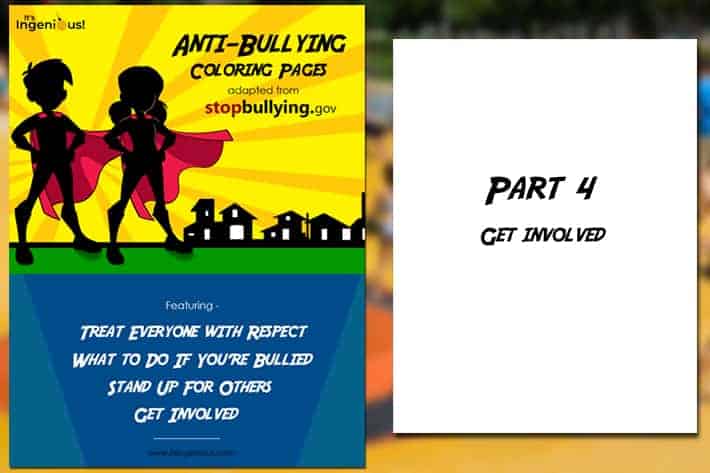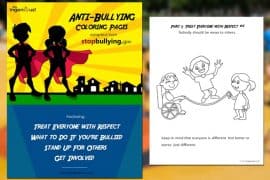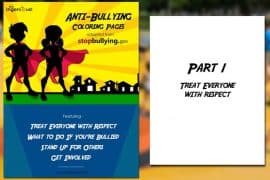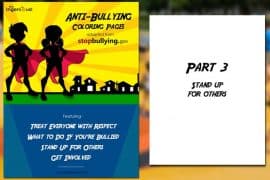“You can be a leader in preventing bullying
in your community.”
These coloring pages are adapted from the material at StopBullying.gov and you should go there for additional help. You can download them individually from this page or download the entire anti-bullying coloring book here.
1. “Find out more about where and when bullying happens at your school. Think about what could help. Then, share your ideas. There is a good chance that adults don’t know all of what happens. Your friends can go with you to talk to a teacher, counselor, coach, or parent and can add what they think.”

Most children want to be kind and make a difference. They also want to feel like they are being heard and respected.
Take kids on a safety walk around school or the places that they play and have them point out where they think or know bullying is happening. Then help them brainstorm things they believe would make the area safer.
Some children might not feel comfortable doing this activity out loud, especially if the person bullying them is nearby. If you’re a teacher, consider putting a “safety suggestions box” in your classroom where students can confidentially put safety concerns, suggestions, or report bullying.
2. “Talk to the principal about getting involved at school. Schools sometimes give students a voice in programs to stop bullying. Be on a school safety committee. Create posters for your school about bullying. Be a role model for younger kids.”

Giving kids the power to combat bullying in their school helps them take ownership of their school.
Have your class sit down for a “town meeting” with the principal and brainstorm ways students can be involved at school. Once there is a list of things the school is willing to enact, have students choose ways to be involved that fit their own talents and interests.
Artists might love making posters, social media presentations or painting kindness murals or Buddy Benches. Kids who enjoy being leaders might want to host kindness clubs at lunch. Students who are gifted at being a role model or mentoring might choose to partner with a younger student for games, outings or weekly lunches.
The more power and control the students have over creating a culture of kindness, the more likely they are to stay involved and avoid bullying.
3. “Write a blog, letter to the editor of your local
newspaper, or tweet about bullying.”

Helping your class or individual students write blogs, letters or social media posts about bullying teaches skills that go well beyond the classroom.
And having them advocate for change using social media or the news can rally an entire community around this important cause.









Comments are closed.